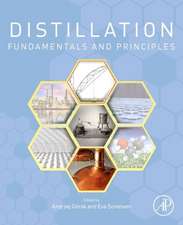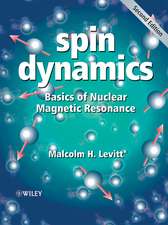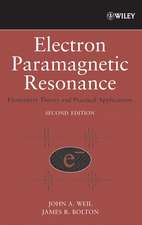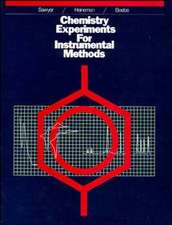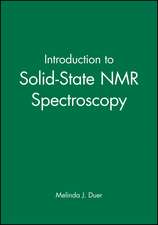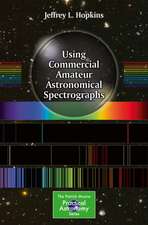Enzyme Chemistry: Impact and applications
Autor Colin Sucklingen Limba Engleză Paperback – 11 noi 2011
| Toate formatele și edițiile | Preț | Express |
|---|---|---|
| Paperback (1) | 949.55 lei 6-8 săpt. | |
| SPRINGER NETHERLANDS – 11 noi 2011 | 949.55 lei 6-8 săpt. | |
| Hardback (1) | 955.56 lei 6-8 săpt. | |
| SPRINGER NETHERLANDS – 8 mar 1990 | 955.56 lei 6-8 săpt. |
Preț: 949.55 lei
Preț vechi: 1157.98 lei
-18% Nou
Puncte Express: 1424
Preț estimativ în valută:
181.72€ • 197.32$ • 152.64£
181.72€ • 197.32$ • 152.64£
Carte tipărită la comandă
Livrare economică 23 aprilie-07 mai
Preluare comenzi: 021 569.72.76
Specificații
ISBN-13: 9789401073172
ISBN-10: 9401073171
Pagini: 400
Ilustrații: XII, 384 p.
Dimensiuni: 155 x 235 x 21 mm
Greutate: 0.56 kg
Ediția:2nd ed. 1990. Softcover reprint of the original 2nd ed. 1990
Editura: SPRINGER NETHERLANDS
Colecția Springer
Locul publicării:Dordrecht, Netherlands
ISBN-10: 9401073171
Pagini: 400
Ilustrații: XII, 384 p.
Dimensiuni: 155 x 235 x 21 mm
Greutate: 0.56 kg
Ediția:2nd ed. 1990. Softcover reprint of the original 2nd ed. 1990
Editura: SPRINGER NETHERLANDS
Colecția Springer
Locul publicării:Dordrecht, Netherlands
Public țintă
ResearchCuprins
Contributors.- Preface.- 1 Infant Enzyme Chemistry.- 2 The Mechanistic Basis of Enzyme Catalysis.- 2.1 The mechanistic approach.- 2.2 Concepts of catalysis.- 2.3 Describing a mechanism.- 2.4 Kinetics: the measure of catalysis.- 2.5 Stereochemistry and specificity.- 2.6 Stereochemistry and mechanism.- 2.7 Entropy and enzymic catalysis.- 2.8 Acid-base catalysis.- 2.9 Linear free-energy relationships and enzymic reactions.- 2.10 Enzymic efficiency.- 2.11 Examples of intramolecular catalysis.- 2.12 Transition state analogues.- 2.13 Multiple binding sites.- 2.14 Biomimetic chemistry.- 2.15 Conclusion.- References.- 3 Chemical Models of Selected Coenzyme Catalyses.- 3.1 Introduction.- 3.2 Model investigations of nicotinamide coenzymes.- 3.3 Flavin catalyses.- 3.4 Catalyses relating to vitamin B1 and analogues.- 3.5 Pyroxidal catalyses.- 3.6 Catalyses of thiol coenzymes.- 3.7 Conclusion.- References.- 4 Selectivity in Synthesis - Chemicals or Enzymes?.- 4.1 Introduction.- 4.2 Problems overcome.- 4.3 Logic and analogy in the synthetic uses of enzymes and micro-organisms.- 4.4 Enzymes and chemical reagents in ‘competition’.- 4.5 Late-stage functional-group modification.- 4.6 Biomimetic chemistry in synthesis.- 4.7 Enzymes in organic solvents.- 4.8 Advances in protein chemistry and molecular biology.- 4.9 Conclusions.- References.- 5 Enzymes As Targets for Drug Design.- 5.1 Introduction.- 5.2 Case studies in drug discovery.- 5.3 Recent developments and their application to inhibitor design.- References.- 6 The Impact of Metal Ion Chemistry on Our Understanding of Enzymes.- 6.1 Introduction and general chemical principles.- 6.2 The transition elements iron and copper.- 6.3 Transition metal ions.- 6.4 Main group elements.- 6.5 Some toxic metals.- 6.6 Metal ions as drugs.- 6.7Modern physical methods.- 6.8 Conclusions 262 References.- 7 The Enzymology of The Biosynthesis of Natural Products.- 7.1 Introduction.- 7.2 Recent advances in the study of biosynthetic enzymes.- 7.3 Terpenoid cyclases.- 7.4 Problems and prospects 298 References.- 8 Enzymes in The Food Industry.- 8.1 Introduction.- 8.2 Amylases and starch hydrolysis.- 8.3 Enzymes acting on glucose and oligosaccharides.- 8.4 The plant cell wall and its breakdown.- 8.5 Industrial applications of plant cell wall degrading enzymes.- 8.6 Exogenous enzymes in cheese making.- 8.7 Conclusions 348.- References.- 9 Enzymology And Protein Chemistry in The Wider Area of Biology.- 9.1 Introduction.- 9.2 Studies of enzymes by techniques of molecular biology.- 9.3 Theoretical treatments of enzyme catalysis.- 9.4 Protein structure, homology and genetic relationships.- 9.5 Interactions between proteins and DNA.- 9.6 Novel catalysts.- 9.7 Apolipoprotein B.- 9.8 Receptors.- 9.9 Conclusions 372.- References.

